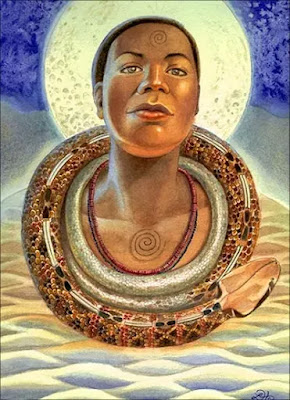Hi'iaka is the Hawaiian goddess of rebirth.
Hi'iaka is the personification of Hawaii, and she is the daughter of Haumea and sister of Pele.
She controls the hills, cliffs, and caverns.
She is the patroness of hula dancers and the inventor of
dance.
Hi'iaka resurrects her sweetheart each time Pele kills him,
unwilling to sacrifice him or the love they share.
Hi'iaka was created from Haumea's cosmic egg, which was kept
warm in Pele's bosom.
She is celebrated with dancing and singing as a joyous
goddess.





























